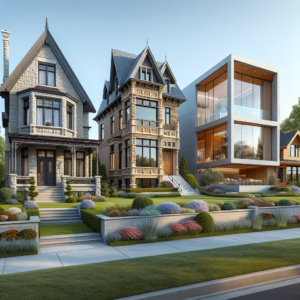
In recent months, the real estate market has undergone significant transformations, prompting analysts and industry experts to delve deeper into home sales data. As the landscape shifts, understanding the underlying trends becomes crucial for buyers, sellers, and investors alike. This article aims to unveil the truth behind the current home sales trends, exploring key factors influencing the market, regional variations, economic impacts, emerging buyer behaviors, and future projections.
Understanding the Current Landscape of Home Sales: An In-Depth Analysis
The current landscape of home sales is marked by a complex interplay of various factors that have led to both surprising and expected outcomes. Recent data indicates a notable decline in home sales volume, with many markets experiencing a slowdown compared to the previous year. This decline can be attributed to rising interest rates, which have made mortgages less affordable for many potential buyers. Additionally, inventory shortages continue to plague the market, as new construction has not kept pace with demand. As a result, home prices have remained elevated, further complicating the purchasing process for first-time buyers and those looking to upgrade. Understanding these dynamics is essential for stakeholders aiming to navigate the evolving real estate environment.
Key Factors Influencing Home Sales Trends in Today’s Real Estate Market
Several key factors are currently influencing home sales trends, with interest rates being at the forefront. The Federal Reserve’s monetary policy has led to increased borrowing costs, which has deterred many prospective buyers from entering the market. Furthermore, inflationary pressures have resulted in higher costs for goods and services, leaving consumers with less disposable income for home purchases. Additionally, demographic shifts, such as the aging population and changing preferences among millennials, are reshaping demand. Remote work trends have also altered the desirability of certain locations, as buyers seek homes that accommodate their new lifestyles. These factors collectively contribute to the complexity of the current real estate landscape.
Regional Variations: How Home Sales Differ Across the United States
Home sales trends are not uniform across the United States; significant regional variations exist that reflect local economic conditions, demographic shifts, and housing supply. For instance, metropolitan areas such as Austin and Phoenix have seen a surge in demand, driven by an influx of new residents seeking affordable housing and a favorable climate. In contrast, cities in the Northeast, like New York and Boston, are experiencing stagnation due to high prices and limited inventory. Furthermore, rural areas are witnessing a resurgence as remote work becomes more prevalent, allowing individuals to seek homes outside urban centers. These regional discrepancies highlight the importance of localized analysis when assessing home sales trends.
The Impact of Economic Conditions on Home Sales: A Statistical Overview
Economic conditions play a pivotal role in shaping home sales, and recent statistical data underscores this relationship. According to the National Association of Realtors, home sales have decreased by approximately 15% year-over-year, largely attributed to rising mortgage rates and inflation. Additionally, consumer confidence has waned, with many potential buyers opting to delay their purchases amid economic uncertainty. The unemployment rate, while relatively low, has shown signs of volatility, further impacting buyer sentiment. As economic indicators fluctuate, the real estate market remains sensitive to changes, necessitating ongoing monitoring of these conditions to anticipate shifts in home sales.
Emerging Patterns: What Recent Data Reveals About Buyer Behavior
Recent data has unveiled emerging patterns in buyer behavior that reflect the changing priorities of consumers in today’s market. A significant trend is the increasing preference for larger homes with dedicated office spaces, as remote work continues to influence lifestyle choices. Additionally, buyers are showing a greater inclination towards suburban and rural properties, seeking more space and a better quality of life. The desire for energy-efficient homes and sustainable features is also on the rise, as environmentally conscious consumers prioritize eco-friendly living. Furthermore, the demographic profile of homebuyers is evolving, with younger generations entering the market earlier than previous cohorts, driven by changing attitudes towards homeownership and investment.
Future Projections: Anticipating Changes in Home Sales Trends Ahead
Looking ahead, several projections suggest that home sales trends may continue to evolve in response to ongoing economic and social changes. Analysts predict that as inflation stabilizes and interest rates potentially decrease, buyer confidence may gradually return, leading to an uptick in home sales. However, inventory challenges are likely to persist, which could keep home prices elevated in many markets. Additionally, the trend towards remote work is expected to solidify, further influencing buyer preferences and regional dynamics. As the market adapts to these changes, stakeholders must remain vigilant and responsive to emerging trends to capitalize on opportunities in the evolving real estate landscape.
In conclusion, the current state of home sales presents a multifaceted picture shaped by various economic, social, and regional factors. As the market continues to adjust to rising interest rates, changing buyer behaviors, and shifting demographic trends, understanding these dynamics is essential for anyone involved in real estate. By staying informed and adaptable, buyers, sellers, and investors can navigate the complexities of the market and make informed decisions that align with their goals. The future of home sales remains uncertain, but by analyzing current trends and anticipating changes, stakeholders can position themselves for success in an ever-evolving landscape.


























